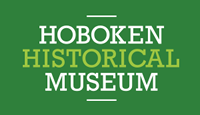Building Hoboken
While living in Manhattan with his wife, Colonel John Stevens became interested in building an estate. In 1783 he explored some land across the river. William Bayard’s farm had stood there, but it was confiscated by the colonial government of New Jersey because Bayard sided with the British Crown. On May 1, 1784 Stevens bought Bayard’s old farm from the State of New Jersey for 18,340 Pounds sterling, or about $90,000. He settled on the name Hoboken, a closer approximation to the Lenape word for the area than Hoebuck, as Bayard’s farm had been known.
In the early days John farmed and cleared trees at Hoboken, but he had other improvements in mind. He built a house on Castle Point, cleared land for development, laid out a partial street grid and had attractive landscaping done on what would become gardens and pleasure grounds. In 1794, Stevens successfully lobbied the New Jersey State Legislature to authorize a road to be laid out to Hoboken, which would compete with a chartered toll road from Newark to Paulus Hook in Jersey City.
 Stevens soon brought more people to Hoboken. He began to sell lots in 1804. Until 1814 the family lived at Hoboken only in the summer, spending much of the year at the family home in Manhattan. John found the river crossing to be unsatisfactory and soon bought out a ferry company, which further added to his land holdings. The Stevens ferry and lands, including the Elysian Fields and River Walk Promenade, brought thousands of visitors to Hoboken from the 1820s to the 1850s. In first half of the nineteenth century, the Elysian Fields, north of Castle Point, was one of the most frequented pleasure grounds in the country, and could host as many as 20,000 visitors in a day.
Stevens soon brought more people to Hoboken. He began to sell lots in 1804. Until 1814 the family lived at Hoboken only in the summer, spending much of the year at the family home in Manhattan. John found the river crossing to be unsatisfactory and soon bought out a ferry company, which further added to his land holdings. The Stevens ferry and lands, including the Elysian Fields and River Walk Promenade, brought thousands of visitors to Hoboken from the 1820s to the 1850s. In first half of the nineteenth century, the Elysian Fields, north of Castle Point, was one of the most frequented pleasure grounds in the country, and could host as many as 20,000 visitors in a day.
The family sold more land in the 1830s. On February 21, 1838, the Hoboken Land and Improvement Company was incorporated. The Stevens brothers John Cox, Robert, James, and Edwin were among the six partners. The HLI Co was empowered to improve lands they owned (primarily north of Fourth Street) by dividing it into lots, grading and leveling land, constructing buildings, installing infrastructure, and renting or selling land.
Sources
Archibald Douglas Turnbull, John Stevens, an American Record. 80-88, 96, 180
Christina A Ziegler-McPherson, Immigrants in Hoboken. 27-29.
History, Stevens Institute of Technology. www.stevens.edu/
Jim Hans, 100 Hoboken Firsts. 112-115.
Wheaton J. Lane, From Indian Trail to Iron Horse. 124.
